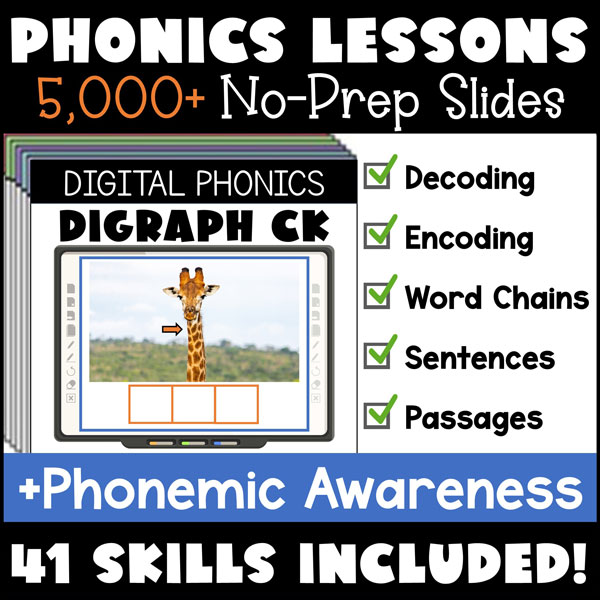Do you feel like the level of meaning and engagement in your structured literacy lessons could use a boost from some related activities?
Could your students’ vocabularies use some strengthening?
Is asking kids to read word list after word list getting a little old?
While I love the structure of a good structured literacy lesson, and I know my most at-risk readers benefit tremendously from the familiar routines, sometimes we need to add a little extra spice to increase interest in our lessons.


This not only adds enjoyment for the student AND the teacher, but it enhances our children’s vocabulary, oral language skills, and personal connections to what to they read.
Another benefit is that you don’t need extra time to fit these activities in.
Any time currently allotted for “word practice” could be used for the word activities described below.
I may use the sentence “mix and fix” during sentence reading time. And after I’ve done the sentence completion activity a few times, I find this to be a meaningful independent activity for students to complete while I am doing timed progress monitoring on other students.
Since I’m an intervention specialist, most of my teaching is with small groups of 3-5 students.
If you teach a larger group, I recommend these same activities, but display the index cards or sentence strips on a large pocket chart in front of your class. You could have students write their responses on individual white boards. That way, 100% of students are engaged, and you get real-time useful information on who is mastering the skill and who needs more practice.
With that said, here are five easy, low-prep activities to increase meaning and engagement in ANY structured literacy lesson using just index cards or sentence strips.
1. “Odd one out”
Display three words on index cards (one word per card). Model how to read each of the three words, and determine how two of the words might be related and one word is not.
For example, let’s say you display the words “hot”, “sun”, and “gum”. The words “hot” and “sun” are related but “gum” is not.
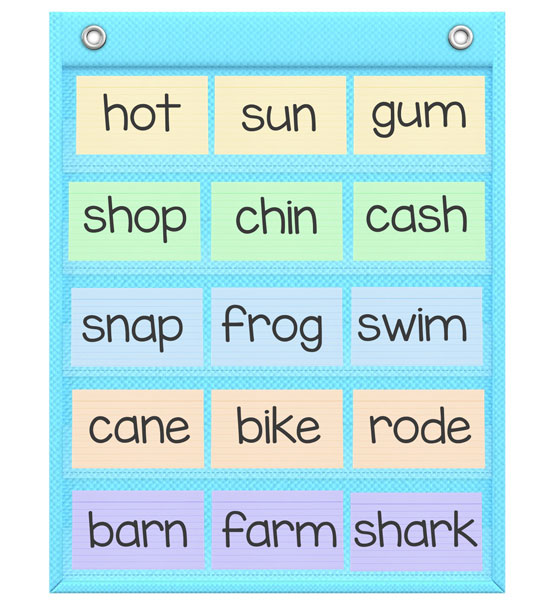

Encourage students to speak in complete sentences to explain their thinking.
Note: There is not always one right answer! For the words “cat”, “vet”, and “box”, students may say, “If your cat is sick, you take her to the vet”. Another student might say. “My cat likes to hide and nap in a box”.
As long as there is a meaningful connection and they can explain it, it counts!
For the words “shop”, “cash”, and “chin”, students might say, “You need cash to shop. You don’t use your chin to shop!”
| CVC examples | Digraph examples | Blends examples | VCE examples | R-controlled examples | Vowel team examples |
|---|---|---|---|---|---|
| hot, sun, gum | duck, quack, ship | flag, slip, trip | rode, cane, bike | barn, farm, shark | eat, greet, sweet |
| cat, vet, box | shop, cash, chin | frog, snap, swim | froze, ice, game | fork, storm, corn | boat, coast, coach |
| ran, sat, cup | shed, shack, shin | fist, jump, hand | lime, cube, shape | bird, swirl, perch | tight, sight, light |
2. Find the word that means _________
Write 5-10 decodable words (current or review words based on the phonics patterns you’ve taught) on index cards (one word per card).
I intentionally find the words from past lessons that are less common and/or more difficult to understand. This way, I’m improving students’ vocabulary while focusing on their decoding accuracy at the same time.
In small group, spread the words face up across the table. Make sure the cards are within easy reach of your students.
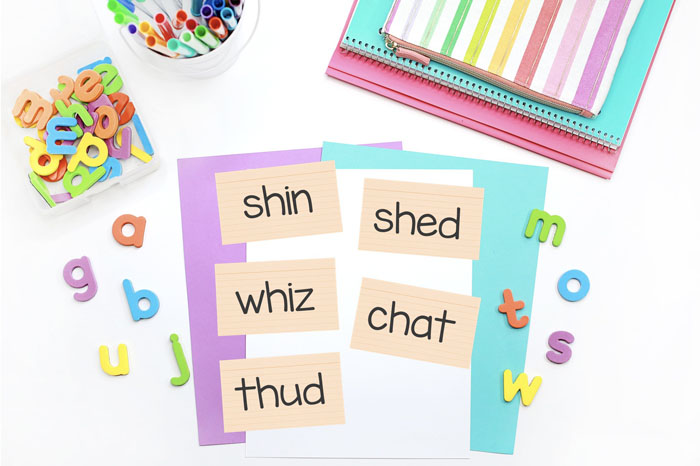

Give clues based on the meaning of a word. You might say, “Find the word that means to cry really hard (correct answer = sob).”
“Find the word that means talk in a friendly way (chat).”
“Find the word that means the opposite of getting an A (flunk).”
When students find the word that fits, they can point to it and read it. If it’s correct, they can flip that card face down. Or, you may let them keep the card.
If your students thrive on competition, you can do this structured literacy activity as a game and see who can find the correct word first. If you want to give students equal chances to participate and focus on accuracy rather than speed, you can give clues to one student at a time.
I’ve included sample words that you might find in your structured literacy lessons below, based on phonics pattern.
| CVC | Digraphs | Blends | VCE | R-controlled | Vowel team |
|---|---|---|---|---|---|
| sob lap den lob rut | shin shed whiz chat thud | stump flunk vast quest stomp | fate tone spike dune theme | spark yarn torch perch squirm | strain leap boast slight stew |
3. Find the “alien” word
This activity is similar to “odd one out”, but the goal is finding the nonsense word in a set of words.
Display two to three real words with one nonsense word. Students must read each word silently and identify the nonsense word.
The focus is on decoding accuracy. Encourage students to sound out each word in their mind and picture what it means.
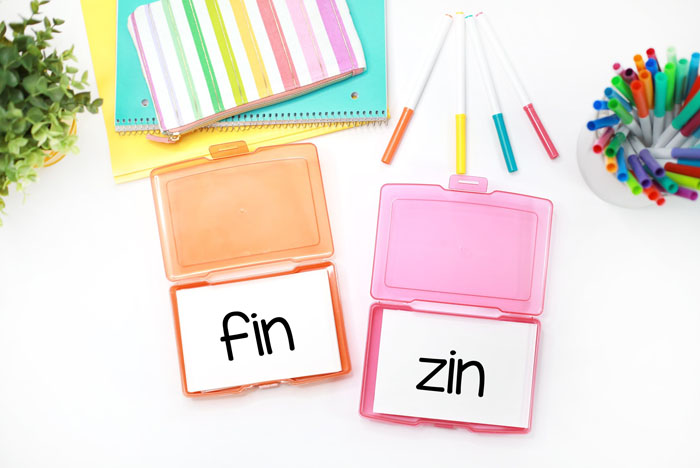

If the word makes no sense (assuming they read it correctly in their minds), then that’s a nonsense word. We call these words “alien” words because they make no sense to us as humans … and because it’s fun to sit an alien plushie at the table!
When we find the alien word in each set, we hand it to our alien friend.
4. Sentence mix and fix
Take a sentence from any lesson (current or review). Write each word on an index card or sentence strip (and cut).
Put all of the words for that sentence in a separate envelope, or just clip them together with a paper clip.
Model how to put the sentence in order. Say your thinking out loud. “Hmm … Who is this sentence about? I think it’s about Dad. I see a period after ‘map’, so I’ll put that at the end. Let me read it to see if it makes sense.”
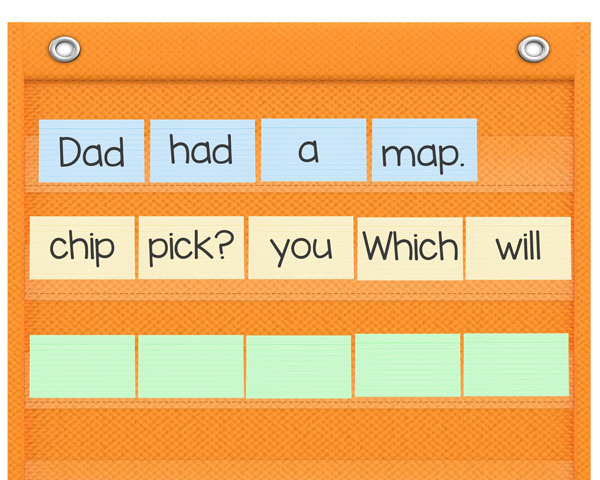

Then, mix up that same sentence and ask a student to “fix it”. After they put it back in order, ask them to read it back to you. Finally, have them pick a new sentence to “mix and fix”.
This works well in a small group, so have 3-5 sentences prepared. After each student fixes and reads their sentence, they can pass it on to another student so everyone gets a few turns with a new sentence.
If teaching whole group, you can display the mixed up sentence on a pocket chart (or attach with magnets on your white board).
After a few times modeling, asking for help from students as you do it, put a new “mixed up” sentence on display and ask students to write it correctly on their whiteboards or in notebooks. Early finishers can illustrate the sentence as well. Ask students to read the sentence back to you chorally or to a partner next to them.
| Phonics skill | Sentence |
|---|---|
| CVC | Dad had a map. |
| Digraph | Which chip will you pick? |
| Blends | The slug is in the grass. |
| VCE | Jane can skate to the lake. |
| R-controlled | Can sharks swim in the dark? |
| Vowel team | Jay had to wait for the train in the rain. |
5. Phrase into sentence
Take a sentence from any lesson (current or review). Pick a meaningful phrase from the sentence and write it on a sentence strip.
For extra fun and meaning, change the name to a student’s name so they can personalize the sentence. If no name is given, encourage students to use their own name or their teacher’s name! They will have fun coming up with a sentence about you.
They will read the phrase silently and think of how to turn it into a complete sentence (either orally, or for a greater challenge, written).
The first time I did this, I was a little shocked at how difficult it was for some of my students. I would recommend doing several examples of your own before asking students to come up with ideas together and then independently.
This activity builds understanding of sentence syntax while providing valuable decoding practice at the phrase and sentence level.
To differentiate this activity, you can focus on adding different parts of the sentence. It’s easiest to give students a beginning and let them add an ending. Slightly more challenging is to provide students with an ending and ask them to write the beginning. The most challenging will be to have students add a beginning and an ending.
Here are some sentence phrase examples with possible complete sentences.
| Phonics skill | Sentence phrase | Complete sentence |
|---|---|---|
| CVC | The cat ran to . . . | The cat ran to his bed. |
| Digraph | I wish for . . . | I wish for a bag of hot chips. |
| Blends | . . . on my desk! | A big frog jumped on my desk! |
| VCE | . . . will bake a cake for . . . | Ms. Pamela will bake a cake for her nice class. |
| R-controlled | . . . likes to bark at . . . | My dog Sparky likes to bark at cats on the porch. |
| Vowel team | . . . on the beach. | We ate a bunch of sweet treats on the beach. |
Why these structured literacy activities work
I love all of these activities because not only are they so easy to implement, but they provide effective and engaging spins on our daily structured literacy lesson routines. They strengthen vocabulary, oral language skills, and decoding accuracy at the same time. I hope you find success with them as well!
If you need complete structured literacy lessons with absolutely zero prep, feel free to check out our digital lessons for 41 phonics skills from basic to advanced. Each lesson includes:
- Guided discovery of new sound-spelling patterns with mouth articulation visuals
- Ample decoding and encoding practice at the word and sentence level
- Word chains and minimal pairs to strengthen decoding accuracy and discourage guessing
- A relatable decodable passage
- Interesting, real photographs
Save your precious planning time and get a year’s worth of research-based lessons all in one place!
